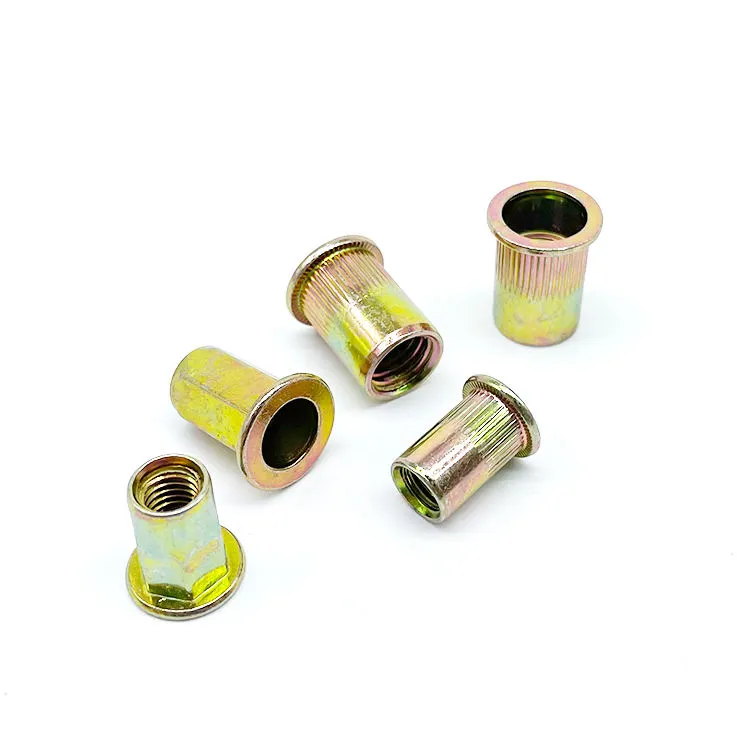

Self-Drilling Screws with Self-Tapping Features for Enhanced Construction Efficiency
Dec . 16, 2024 14:09 Back to list
Self-Drilling Screws with Self-Tapping Features for Enhanced Construction Efficiency
Understanding Self-Drilling and Self-Tapping Screws
In the world of fasteners, two terms often come up self-drilling screws and self-tapping screws. While they may sound similar, they serve distinct purposes in construction and manufacturing processes. Understanding the differences between these two types of screws can significantly influence the efficiency and effectiveness of your projects.
What are Self-Drilling Screws?
Self-drilling screws, often referred to as Tek screws, are designed with a sharp, drill-point tip that allows them to cut through materials without the need for pre-drilling a pilot hole. This feature saves time and effort, making them popular in applications where speed is critical. The threaded shaft of a self-drilling screw enables it to create its own hole while fastening materials together, which is especially useful in metal-to-metal connections.
Self-drilling screws are commonly used in industries like construction, metal fabrication, and automotive assembly. They excel when dealing with thin sheets of metal, as well as in applications requiring a hermetic seal. Notably, self-drilling screws are often made from materials such as stainless steel or carbon steel, which enhances their durability and resistance to corrosion.
The Advantages of Self-Drilling Screws
1. Efficiency The most significant advantage of self-drilling screws is their efficiency. By eliminating the need for pre-drilling, these screws reduce assembly time, thus speeding up the construction process. 2. Reduced Labor Costs Since self-drilling screws require fewer tools and less preparation, labor costs can be significantly lowered. Workers can focus on fixing rather than drilling, increasing productivity.
3. Versatility These screws can be used in various materials, including steel, aluminum, and wood, making them a versatile choice for contractors and manufacturers alike.
self drilling self tapping

What are Self-Tapping Screws?
Self-tapping screws, on the other hand, do not come with a drill-tip. Instead, they feature a sharp point that helps them “tap” into the material they are being driven into. While they can create their own threads, they generally require a pilot hole in harder materials, especially when working with metals or dense woods.
Self-tapping screws come in various designs, including those with coarse threads ideal for softer materials and fine threads suitable for harder substances. They are frequently used in woodworking, plastic fastening, and situations where a firm grip is necessary without the additional features of a self-drilling screw.
The Advantages of Self-Tapping Screws
1. Customizability Because they come in various sizes and thread types, self-tapping screws can be selected to meet the specific requirements of a project, ensuring the best possible fit.
2. Material Compatibility They are ideal for a variety of materials, including plastics, thin metals, and wood, making them a fundamental component in many assembly processes.
3. Less Breaking In some cases, using self-tapping screws can reduce the risk of breakage compared to self-drilling screws, especially in situations with harder materials when a pilot hole is utilized.
Conclusion
In conclusion, both self-drilling and self-tapping screws offer unique advantages that suit different applications. Self-drilling screws are ideal for fast, efficient assembly, particularly in metalworking, while self-tapping screws provide versatility and customizability across multiple materials. Choosing the right type of screw depends on the specific requirements of your project, including the materials involved and the desired efficiency. By understanding these two types of screws, professionals can make informed decisions that enhance productivity and ensure the success of their endeavors.
Latest news
-
High-Strength Hot-Dip Galvanized Bolts-Hebei Longze|Corrosion Resistance&High Strength
NewsJul.30,2025
-
Hot Dip Galvanized Bolts-Hebei Longze|Corrosion Resistance&High Strength
NewsJul.30,2025
-
Hot Dip Galvanized Bolts - Hebei Longze | Corrosion Resistance, High Strength
NewsJul.30,2025
-
High-Strength Hot Dip Galvanized Bolts-Hebei Longze|Corrosion Resistance, Grade 8.8
NewsJul.30,2025
-
Hot Dip Galvanized Bolts-Hebei Longze|Corrosion Resistance,High Strength
NewsJul.29,2025
-
High-Strength Hot Dip Galvanized Bolts - Hebei Longze Metal Products Manufacturing Co., Ltd.|corrosion resistance&high strength
NewsJul.29,2025

